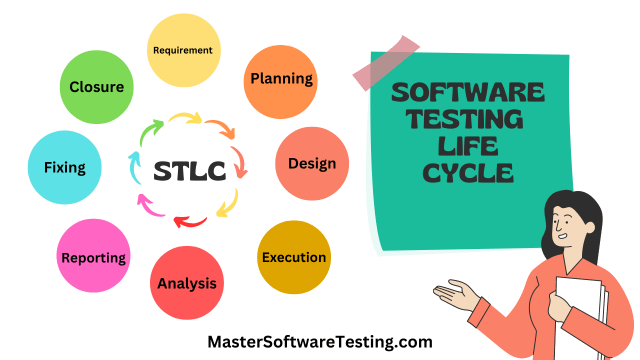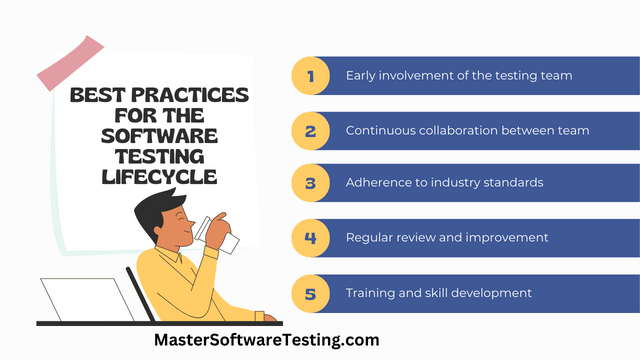
5/20/2023
My latest article - What is Exploratory Testing? Learn with a real world example
The software testing lifecycle (STLC) is a crucial aspect of the software development process that helps ensure the delivery of high-quality, reliable, and secure software applications. This article provides an overview of the STLC, its phases, best practices, and tips for successful implementation in your software development process.
 The Software
Testing Lifecycle: An Overview
The Software
Testing Lifecycle: An Overview
The software testing lifecycle (STLC) is a structured and systematic approach to software testing that consists of multiple phases, each with specific objectives and deliverables.
The STLC helps ensure comprehensive test coverage, early detection of defects, and effective collaboration between the development and testing teams.
Delivering a bug-free product enhances the user experience and ultimately leads to higher customer satisfaction.
The STLC is a process-oriented and versatile approach to ensuring that software applications meet specific requirements, identify defects, and validate the product's functionality, reliability, and performance.
By focusing on each phase of the STLC, organizations can deliver high-quality software with lower maintenance costs and increased customer retention.
Software Development Life Cycle (SDLC) (opens in a new tab) is a systematic process that covers the complete journey of a software product from its inception to its deployment.
It involves various phases, such as planning, design, development, testing, and maintenance, that ensure the successful delivery of a high-quality software product.
SDLC provides a structured method for developing software, managing and controlling the project more efficiently.
Based on my experience in the industry, here is a list of questions that will help you better understand the overall STLC.
Software Testing Life Cycle (STLC) is a subset of SDLC that focuses on the different stages of testing a software product.
It comprises a sequence of activities performed during the testing process, from requirement analysis to testing closure.
STLC ensures the quality of the software by identifying defects, verifying the product's functionality, and validating its performance.
It is an essential aspect of software development that helps deliver a reliable and efficient product to the end user.
STLC's primary goal is to find and fix mistakes, ensuring a good quality product.
Before deployment, STLC is responsible for ensuring the quality and functionality of the software product.
It identifies potential defects, errors, or inconsistencies in the product through testing and works with the development team to fix them.
STLC acts as a checkpoint in SDLC to ensure that the final product meets the desired requirements and delivers a smooth user experience.
By incorporating STLC into SDLC, organizations can improve the overall quality of their software products and reduce the risk of failures or customer dissatisfaction.
A team of skilled software testers or quality assurance (QA) professionals performs the STLC.
They collaborate closely with the development team, product managers, and other stakeholders to ensure that the software product meets its requirements, functions correctly, and offers a satisfactory user experience.
The primary outcome of STLC is a high-quality software product with fewer defects, improved functionality, and enhanced performance.
Through STLC, organizations can identify and rectify potential issues in the software before its deployment, resulting in a more reliable and efficient product.
In the long run, a well-executed STLC can reduce maintenance costs and improve customer satisfaction.
The entry criteria in software testing refer to the conditions or requirements that must be met before the testing process can begin.
Some standard entry criteria include the availability of a stable build, a completed test plan, clearly defined test cases, data, and a fully configured test environment.
The exit criteria in software testing define the conditions that must be met before the testing process can be considered complete.
Some typical exit criteria include the successful execution of all test cases, identifying and resolving high-priority defects, full functional coverage, and meeting the project's predefined quality standards.
STLC ends when the exit criteria have been met, indicating that the software product has achieved the desired level of quality and is ready for deployment.
The test closure phase marks the end of STLC, where the QA team evaluates the test results, discusses any lessons learned, and prepares a test closure report.
The software product is then considered ready for deployment, and the focus shifts to post-deployment maintenance and support.
 Phases of the Software
Testing Lifecycle
Phases of the Software
Testing Lifecycle
The STLC consists of several phases that help guide the testing process, ensuring a structured and systematic approach to testing. The main phases include:
In this phase, the testing team defines the scope, objectives, and strategy for testing. They also identify the necessary resources, tools, and timelines for testing. The test plan serves as a blueprint for the entire testing process.
During the test design phase, the testing team develops test cases, scenarios, and test data based on the requirements and specifications of the software. Test design techniques like black, white, and grey-box testing can create practical and comprehensive test cases.
In this phase, the testing team executes the test cases and scenarios, comparing the actual and expected results. Test execution can be done manually or using automated testing tools, depending on the project's requirements and resources.
The next step is to analyze the test results. The analysis includes identifying any defects that were found and determining the severity of the defects.
When defects are identified during test execution, they are logged and reported to the development team. The severity of the defects is assessed, and their impact on the software's overall quality is determined.
The development team fixes the defects, and the testing team retests the software to ensure the issues have been resolved. This iterative process continues until the software meets the specified requirements and quality standards.
In the final phase of the STLC, the testing team evaluates the test results, creates reports, and archives test artifacts. The test closure phase helps identify areas for improvement in the testing process and ensures that lessons learned are documented for future projects.
 Best
Practices for the Software Testing Lifecycle
Best
Practices for the Software Testing Lifecycle
To ensure a successful and efficient STLC, consider implementing the following best practices:
Implementing a well-structured software testing life cycle is crucial for delivering high-quality, reliable, and secure software applications.
By committing to the best practices outlined in this article and focusing on each phase of the STLC, organizations can improve the quality and success of their software development projects.